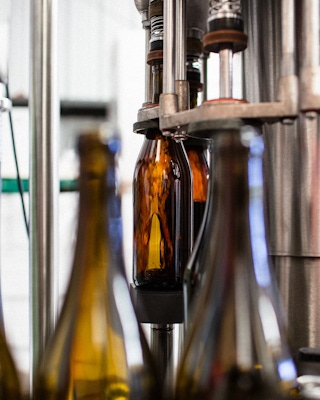
Reconciling an Old Category with Fresh Demand
A differentiating aspect of Pernod’s global portfolio is the depth and breadth of its wine brands. The wine category, however, was dated and confusing, reliant on heritage drivers and inconsistent flavor profiles. In such a market, Pernod saw an opportunity to create a new brand more reflective of modern consumer needs and focused on an innovative approach to visual design and packaging.
Start with Why
Innovation without direction is subjective dreaming. The strategy team’s first step in this process was therefore to establish a platform and strategic framework to ensure that the innovation process was directed and built with a core sense of purpose to guide it. After evaluating multiple potential platforms, Combo strategists landed on the triple bottom line accounting principles of people, planet and prosperity as the team’s North Star.
Focusing the Problem
With the principles for the innovation solutions defined, Combo strategists then had to understand where in the category the application of this framework could have the greatest potential impact. Through an extensive forensic audit of the category, its supply chain and economic, social, political and technological contributions, it quickly became apparent that the area of focus would be glass.

Why Glass?
The size of a standard wine bottle, 750ml, is a function of one fixed human variable: the volume of air in human lungs that can be expelled by a glass blower. This legacy of the industry has been carried over millennia out of convenience and a desire for standardized formats. What has changed, however, is the production method and quality of the glass in wine bottles.
The indentation at the bottom of a bottle, or punt, was a function of wine bottles being made by glassblowers.
Often thought, incorrectly, to be an indicator of quality, wine producers utilize heavier glass bottles to elevate their products' perceived quality and resulting price point. As Europe has often been a source of premium glass, it is not unusual for American vintners to import empty wine bottles from Europe only to fill and export them back for sale in European markets. It is therefore unsurprising that when analyzing the entire footprint of the category, the glass bottle alone contributes around 70% of the entire industry's carbon footprint.
The production and transportation of glass bottles makes by far the greatest contribution to wine’s carbon footprint.

Materials, Methods and Matchmaking
With glass as the focus and people, planet and prosperity as the guidepost, Combo strategists developed three distinct solution paths. One focused on materiality, and working with structural engineers at Gensler, strategists were able to develop a design concept that reduced structural weight by 60% while bringing a distinctive brand design element to the category. A second direction focused on supply chain solutions and the “milk bottle” approach. While common in Europe, the behavior of returning wine bottles for discounted refills is nascent to nonexistent in the US. Combo therefore created an operational and economic feasibility study, including sourcing and supplier recommendations that would enable a decentralized bottling process. The final concept focused on a partnership with Parley for the Oceans. Utilizing emerging technologies, Combo was able to demonstrate how recycled ocean plastic could provide a viable and sustainable packaging solution without compromising on a premium aesthetic and brand appeal.

New business: Connect with a partner.
Job inquires: View our handbook.
Newsletter©: Sign up.
Combo
76 Bowery, 3rd Floor
NYC, 10013
Social Media
Instagram, Behance, LinkedIn
View our show reel:
Watch video
General inquiries:
hello@combo.co
Media inquires:
press@combo.co